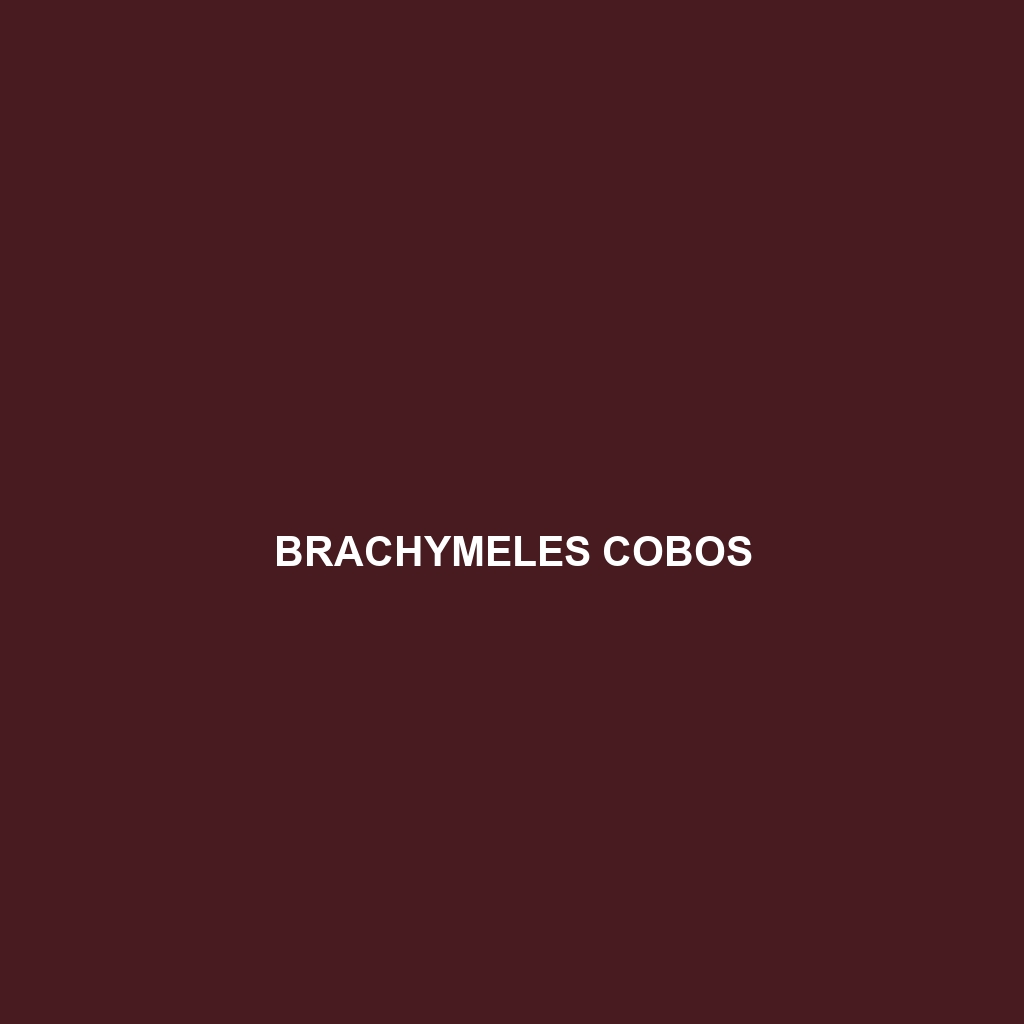Species Description: Brachymeles cobos
Common Name: Brachymeles cobos
Scientific Name: Brachymeles cobos
Habitat: Brachymeles cobos is primarily found in the lush forest regions of the Philippines, particularly on the islands of Mindanao and Luzon. This species thrives in moist, tropical environments, often inhabiting leaf litter and underground burrows, which provide essential protection and humidity necessary for their survival.
Physical Characteristics: Adult Brachymeles cobos typically reach lengths of 15 to 20 cm, exhibiting a slender body shape that aids in burrowing. Their coloration ranges from earthy browns to deeper shades of gray, perfectly camouflaging them within the leaf litter. Notable features include small, beady eyes and a reduced limb structure, which is indicative of their adaptation to a fossorial lifestyle.
Behavior: Brachymeles cobos are primarily nocturnal, emerging at night to forage for food. They are known for their secretive nature, often hiding beneath the soil or within decaying plant material during the day. Their burrowing behavior not only helps them evade predators but also plays a fundamental role in aerating the soil and promoting the health of their ecosystem.
Diet: The diet of Brachymeles cobos mainly consists of invertebrates such as insects, worms, and small arthropods. They utilize their keen sense of smell to locate food sources within the leaf litter. This species displays opportunistic feeding habits, adjusting its diet based on the availability of prey, which is vital for its survival.
Reproduction: Brachymeles cobos typically breeds during the rainy season, which provides favorable conditions for their offspring. Females lay eggs in moist substrates, and the young emerge after an incubation period of several weeks. Parental care is minimal, with the young being vulnerable to predation shortly after hatching.
Conservation Status: Currently, Brachymeles cobos is listed as ‘Vulnerable’ due to habitat loss from deforestation and agricultural expansion. Conservation efforts are paramount to protect their natural habitat and ensure the survival of this unique species.
Interesting Facts: Brachymeles cobos is one of the many species of skinks found in the Philippines, showcasing the country’s rich biodiversity. Interestingly, their reduced limbs are a fascinating adaptation that enhances their ability to burrow, making them distinct from other skink species.
Role in Ecosystem: As a burrowing species, Brachymeles cobos plays a significant role in the ecosystem by aerating the soil and contributing to nutrient cycling. They also serve as prey for larger predators, thus helping to maintain the ecological balance within their habitat. Their presence is indicative of a healthy forest ecosystem and biodiversity.
